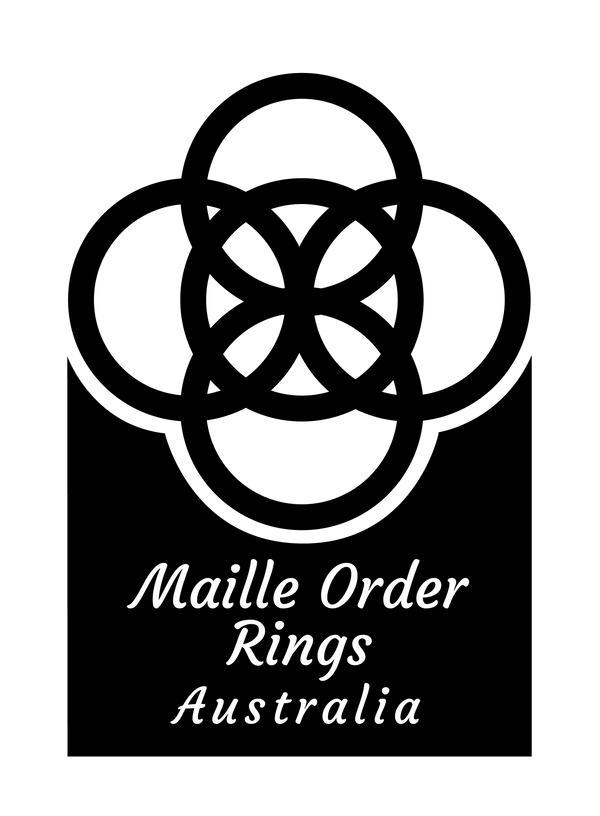Facts & Figures
ASPECT RATIO
You may have seen or heard the term "Aspect Ratio" when researching chain maille. What is Aspect Ratio? It might seem a little daunting however it's really quite simple. Each jump ring has an Aspect Ratio. The Aspect Ratio is kind of like a ring's size. We calculate this "size" so that we can check if a weave will work using that particular ring.
To calculate Aspect Ratio, we use the formula:
A.R.(Aspect Ratio) = I.D.(Ring Inner Diameter) divided by W.D. (Wire Diameter)
A.R. = I.D. / W.D.
Each different chain maille weave has it's own preferred A.R. in order for it to form correctly. If we choose the right ring sizes, we can be assured that our weave will form perfectly and not be too rigid or too loose.
Some weaves can be very A.R. specific whereas others can have a small range of A.R.'s that will work.
Let's take Full Persian 6 in 1 weave.
The ideal A.R. for this weave is 5.5.
It will still work if you use an A.R. that is higher or lower but only marginally.
Let's see what works!
We know that the W.D. for 16 AWG is 1.2mm and the I.D. of a 1/4" ring is 6.35mm.
Let's calculate the AR: 6.35 / 1.2 = 5.29166 (round this up to 5.3)
With an A.R. of 5.3, you have a winner.
Now let's try 16 AWG rings with a 4.5mm I.D.
Again, let's calculate the A.R.: 4.5 / 1.2 = 3.96666 (round this up to 4.0)
Unfortunately an A.R. of 4.0 is too low for Full Persian 6 in 1.
It is handy to note that different ring I.D.'s in different wire gauges can have the same A.R.
For example: 18 AWG, 5.0mm rings have an A.R. of 5.0 and
16 AWG, 15/64" (5.95mm) rings have an A.R. of 5.0.
This means that both of these ring sizes can be used for the same weave,
provided the required A.R. for that particular weave is 5.0.
The 16 AWG version will be heavier & larger in appearance than the 18 AWG version.
~
* For information regarding the Aspect Ratio of each ring size, please see the tables listed on the Jump Ring Product Pages.
It is important to note that there are ALWAYS variances and tolerances when it comes to measuring metals. Some metals are soft and will hold their coiled form once cut whereas others are hard and may spring back open a little after cutting. Different manufacturers will source their mandrels from different places. These mandrels may have a difference in diameter by a mere fraction of a millimeter. This means that no two suppliers will provide rings of exactly the same size. All of these tolerances and variables will have an impact on Aspect Ratio, albeit very minimal.
These tolerances are accepted in the metal working industry.
PLEASE NOTE: This information is provided as a guide only. These pages are the property of Maille Order Rings Australia and are not to be reproduced, distributed or plagiarised in any way.
These pages are subject to change.

Other Helpful Resources
Below are some charts which you may find useful, especially when comparing AWG (American Wire Gauge) and SWG (Standard Wire Gauge).
Subscribe to our emails
Subscribe to our mailing list for insider news, product launches, and more.
